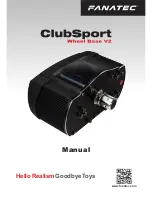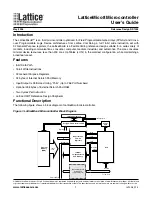
Type 310A
5
functional. A restriction placed in the external tubing
between the diaphragm loading pressure and the
intermediate pressure acts as a downstream bleed.
If the second-stage working regulator fails open,
the distribution pressure increases to the setting of
the Type 32A monitoring pilot (slightly higher than
the original distribution pressure) and is controlled
at that level by the Type 310A-32A-32A. Thus,
downstream equipment is protected against a major
overpressure condition without disrupting service or
venting gas to atmosphere.
In the working pilot, the inlet pressure is reduced
to a pre-determined pilot supply pressure, which is
further reduced to loading pressure for the Type 310A
diaphragm. The loading pressure is piped through
the portion of the monitoring pilot blocked open by the
spacer and, as long as distribution pressure is below
the setting of the monitoring pilot, passes through the
relay orifice of the monitoring pilot to the diaphragm
case of the Type 310A body.
Distribution pressure is piped back to the monitoring
pilot. As long as the distribution pressure is less
than the monitoring pilot setting, the working pilot
controls the Type 310A to maintain intermediate
pressure. If the distribution pressure increases to
the monitoring pilot setting, the monitoring pilot relay
orifice starts to throttle the loading pressure to the
Type 310A diaphragm. This allows the Type 310A
main spring to move the throttling sleeve closer
to the seat and control distribution pressure at the
monitoring pilot setpoint. Therefore, failure of the
second-stage working regulator is controlled with
only a slight increase in distribution pressure, with
the Type 310A-32A-32A accomplishing the entire
pressure reduction function.
Installation and Startup
!
WARnIng
Personal injury or equipment damage,
due to bursting of pressure-containing
parts may result if this regulator is
overpressured or is installed where
service conditions could exceed the
limits given in the Specifications section
and on the appropriate nameplate,
or where conditions exceed any
rating of the adjacent piping or piping
connections. To avoid such injury or
damage, provide pressure-relieving or
pressure-limiting devices to prevent
service conditions from exceeding those
limits. Also, check that the installation is
in compliance with all applicable codes
and regulations.
Additionally, physical damage to the
regulator could break the pilot off the
main valve, causing personal injury
and property damage due to bursting
of pressure-containing parts. To avoid
such injury and damage, install the
regulator in a safe location.
note
For the installation of the regulator in the
line, please consider that SLIP-On flange
gaskets need to be used on the inlet of
all Type 310A regulators, from nPS 1 to 6
(Dn 25 to 150). The gaskets for the outlet
of the Type 310A are standard CL600 RF
welding-neck flange gaskets.
Table 3.
Maximum Travel
Figure 4.
Wide-Open Monitor System
Figure 5.
Working Monitor System
E0694
E0695
BODY SIZE, nPS
MAXIMuM TRAVEL, InCh (mm)
1 (25)
0.5 (13)
2 (50)
0.875 (22)
3 (80)
1 (25)
4 (100)
1.125 (29)
4 x 6 (100 x 150)
1.5 (38)





































